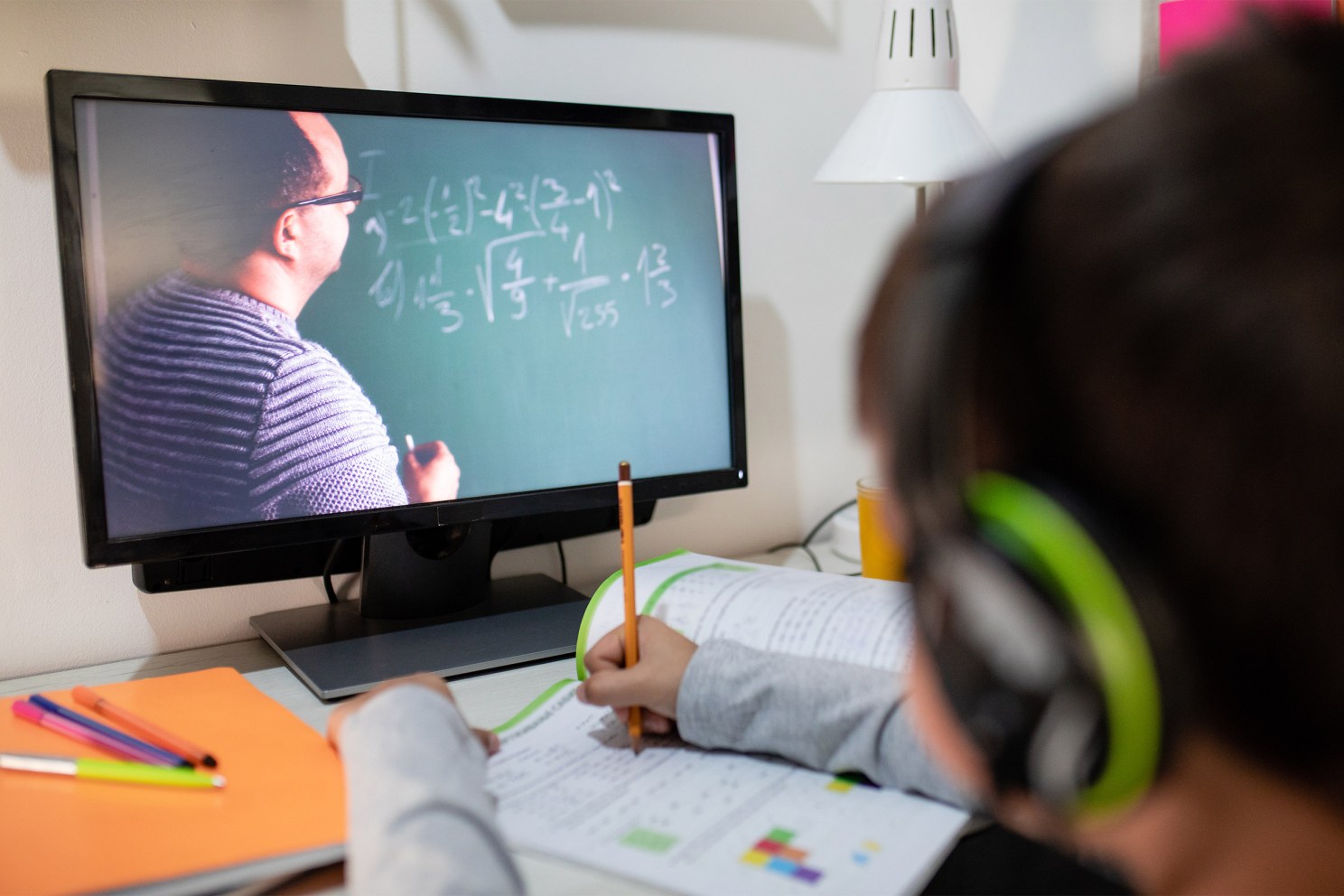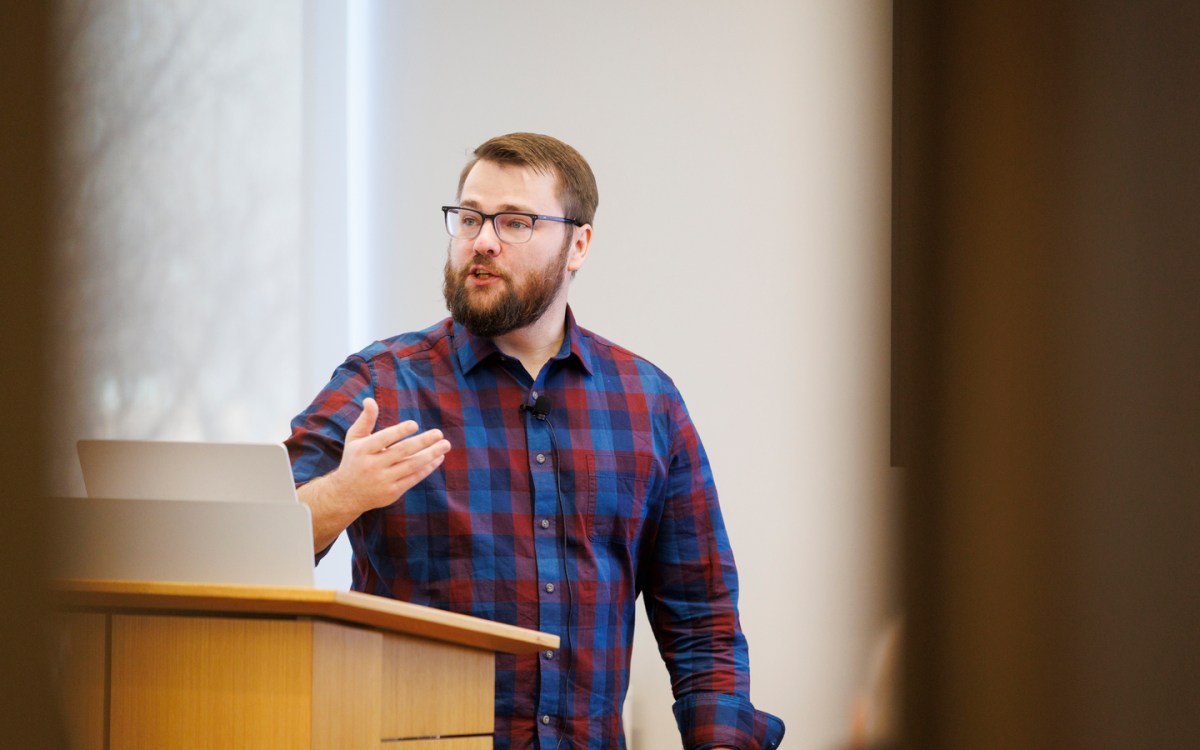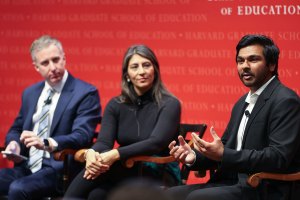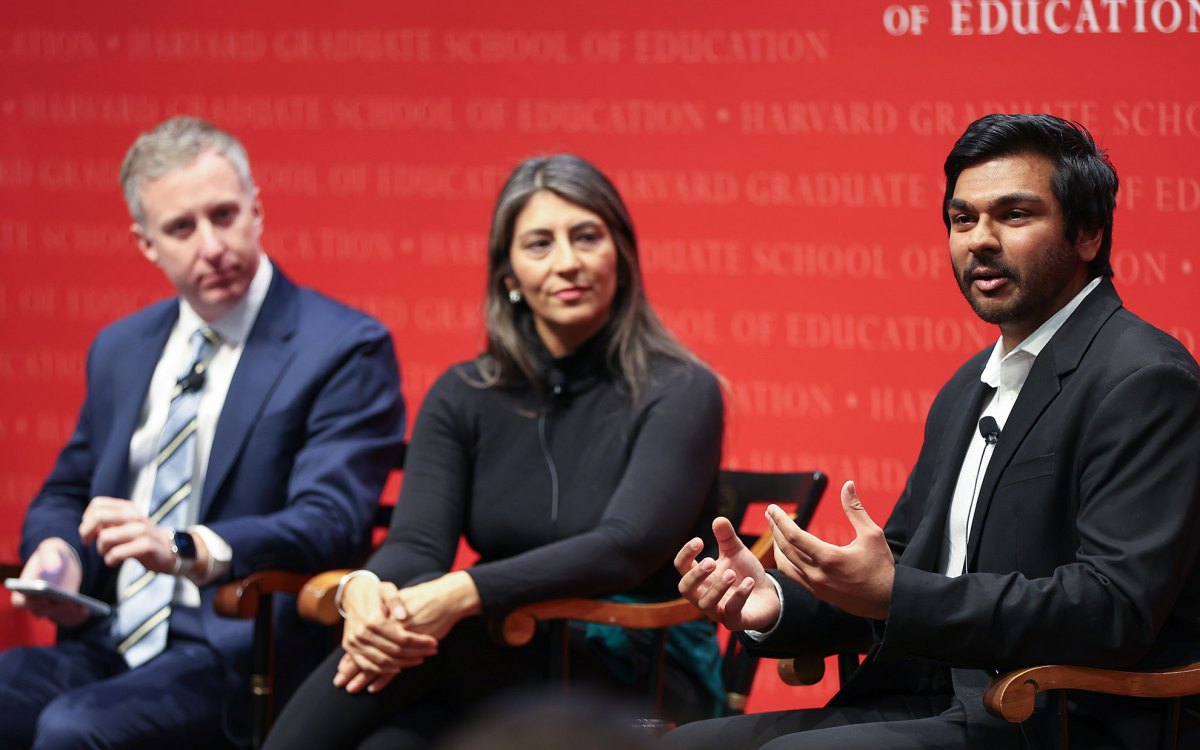
One way to help big groups of students? Volunteer tutors.
Research finds low-cost, online program yields significant results
It’s well established that tutoring programs can make a big difference in student outcomes.
A recent study by Harvard researchers Eliana La Ferrara, Ph.D. ’99, and Michela Carlana looked specifically at the effectiveness of a low-cost, online model staffed by trained college student volunteers, one that could potentially be deployed on a wider basis.
The two found the program showed strong efficacy in improving academic performance for a range of students, including economically disadvantaged ones. And they discovered some unanticipated social, psychological, and attitudinal gains for the students — and even some for the tutors.
La Ferrara said the low cost could make this kind of approach “appealing for some governments.” In the study, the two noted, “Volunteer tutors represent a viable and cost-effective solution to reach a large number of students in need of support.”
The program showed strong efficacy in improving academic performance for a range of students, including economically disadvantaged ones.
La Ferrara is a professor of public policy at Harvard Kennedy School. She is president of the Econometric Society and program director of development economics for the Center for Economic and Policy Research (CEPR). Carlana is an assistant professor of public policy at Harvard Kennedy School.
Their study, which matched middle school students in Italy with volunteer tutors from several universities, began in the spring of 2020 as a response to the COVID-19 pandemic.
“We found ourselves in the middle of the pandemic that hit Italy immediately after the China outbreak,” Carlana said. “Within two weeks, schools closed, and everything became remote.”
Tutors were recruited from Bocconi University, where La Ferrara held the Invernizzi Chair in Development Economics at the time, directing the Laboratory for Effective Anti-Poverty Policies (LEAP), as well as Bicocca University and University of Milan, and trained with education specialists for three weeks to instruct students in math, Italian, and English.
“We had this program running where the pedagogical experts provided the training and also counseling in case the tutors had issues that they wanted to discuss one-on-one,” La Ferrara said.
The study was then repeated in 2022 with a new set of students and tutors at 10 different universities in Northern Italy. “So we were trying to test out and understand both during the pandemic, but also afterwards, whether this is an effective way to improve learning for the most disadvantaged,” La Ferrara said.
Of the 2,196 students in the sample, 42 percent were female, 23 percent were immigrants, and 29 percent had learning disorders.
The researchers looked at administrative data from the Italian Ministry of Education, long-term standardized test scores, the results of a standardized test administered by the research team, and surveys of parents, students, tutors, and teachers. They found that performance, especially in math, improved for nearly every student both during and after the pandemic.
Surprisingly, Carlana said they also found the tutoring had “very strong effects on these other soft dimensions, like psychological well-being, aspiration, and social emotional skills, even if our program is not directly targeted to those.”
Researchers surveyed participants about their aspirations for college and high school and their belief in faith or luck as the key to success. To measure well-being, researchers used the Children’s Depression Screener. They found that the most disadvantaged pupils, especially immigrant students, had the greatest improvement in soft skills.
“When we look at the effect on happiness and depression, those improvements are driven by immigrant children,” La Ferrara said. “Their ability to be in touch with peers when schools are closed, these are students who probably have fewer social networks — maybe they don’t get the call, they’re not on the same WhatsApp groups, or whatever. So for these more disadvantaged or more isolated students, the tutor becomes a very important window outside the family.”
However, as in-person learning resumed, the soft skills benefits for students lessened.
“I feel like in part it could be related to the fact that now the students have a wider set of opportunities outside [of tutoring] either to improve the soft skills that could be the more beneficial in in-person interaction compared to online interaction,” Carlana added.
One thing that proved eye-opening for the researchers was the effect on tutors. La Ferrara and Carlana surveyed participating tutors and those who applied but were not selected due to capacity. They asked questions attempting to gauge empathy and attitudes about the role of hard work, luck, and social connections in achieving success.
“We found that the volunteers who had had become tutors had significantly more empathy toward others, but no different beliefs on the importance of luck versus effort,” La Ferrara said. “So we think this is an aspect that deserves more work, because all the existing studies on in-person tutoring tend to focus on what tutoring does to the recipient, the student, but it’s an important experience for the tutor, especially when they are volunteers … it could be a life-changing experience for some of these younger tutors.”
The researchers are currently in the process of following up with tutors to see how and whether the program impacted their post-graduation career paths.
The two also are working on studying the program in different countries and with different experimental designs to better target and assign students to tutors.
“We like the idea that this could be implementable in many settings, and in fact, one of the settings where we ran the program for two years was the Dominican Republic, which is very different from Italy,” La Ferrara said. “And so it created challenges in adapting the program in recruiting tutors from a very different institutional setting. But in the future, this could be picked up more.”




